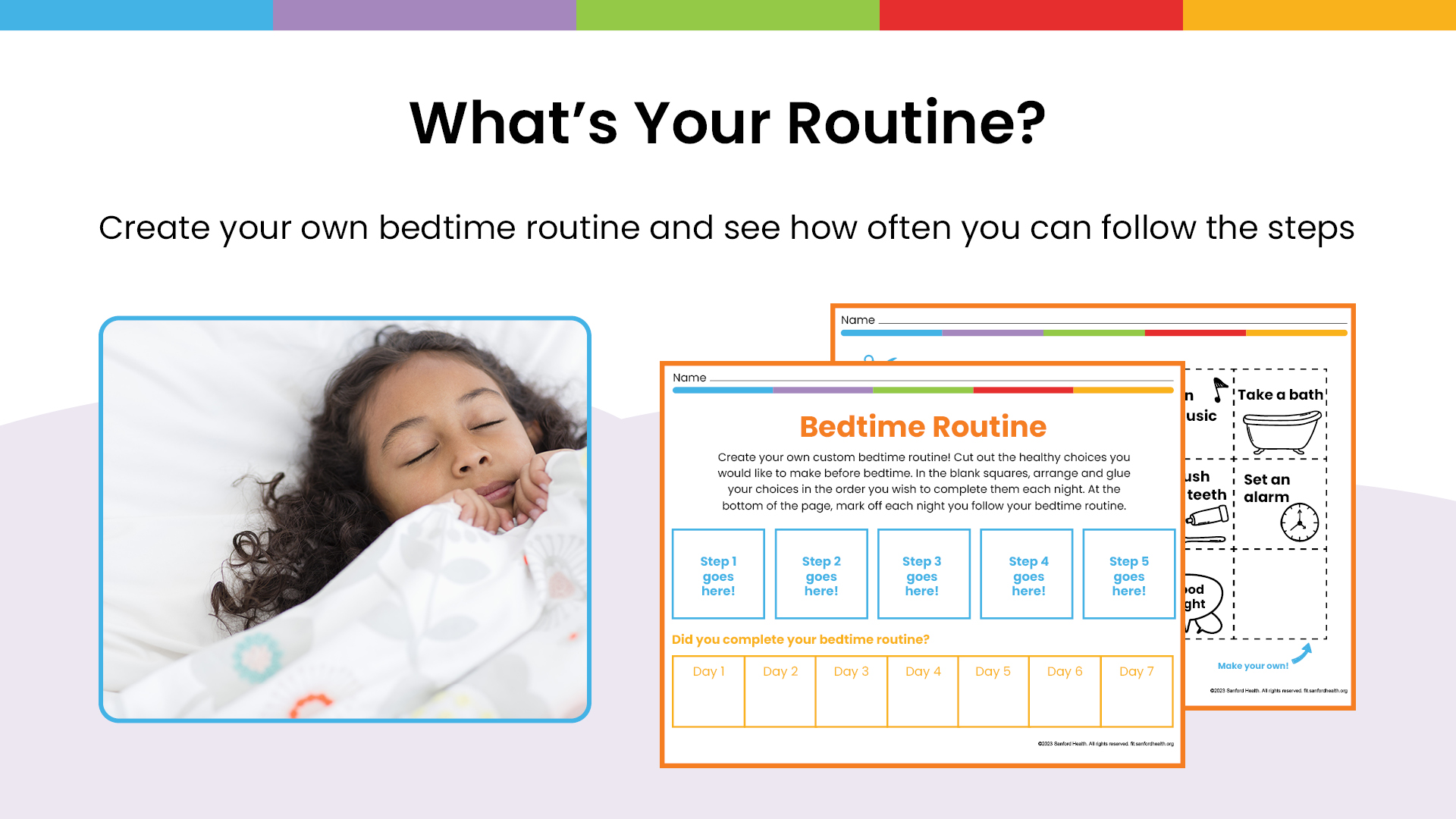Objectives
- Recall that children need 9-12 hours of sleep each night.
- Identify a sequence of activities that make up a bedtime routine.
Info to Know
Recharge is your energy. It influences the choices you make. fit presents different ways to recharge and get energy:
- Relax, without a screen, throughout the day.
- Get enough sleep. Below are the minimum and maximum hours of sleep for different age groups as recommended by the American Academy of Pediatrics:
- Ages 4-12 months: 12-16 hours (including naps)
- Ages 1-2 years: 11-14 hours (including naps)
- Ages 3-5 years: 10-13 hours (including naps)
- Age 6-12 years: 9-12 hours
- Age 13-18 years: 8-10 hours
This unit introduces students to the importance of getting enough sleep. They will learn about how to establish or improve their bedtime routines and how to create their own sleep zone—an environment conducive to sleep.
Set The Stage
Have kids talk to a partner about their bedtime routine. What time do they like to go to bed? How do they feel when they wake up?
To use this with your students click here.
Captivate
Sleep Tips for Kids
Read aloud the stories about Abby and Marty from the slideshow. These two children have very different bedtime routines!
Ask students to predict how much energy each child will have the next day. A little? A lot?
Educate
Bedtime Routines for Better Sleep
Compare and contrast Abby and Marty’s bedtime routines:
- Marty will have the most energy because he has a better bedtime routine and sleep habits.
- Marty’s bedtime routine includes quiet time before going to bed. This makes it easier to fall asleep.
Check for understanding: What will you do for your bedtime routine?
Teacher note: For more background and information about healthy bedtime routine practices, read Why Bedtime Routines Matter and 5 Things Not to Do at Bedtime.
Activate
Improve Your Sleep Habits
Pair students. One student role-plays a bedtime routine idea while the other guesses their actions. It can be something they already do or something new they plan to do as part of their bedtime routine. Check out the Bedtime Routine printable for several healthy choices!
Close the Lesson
Today we looked at our bedtime routines and learned about ways to improve them. Next, we will learn about creating a sleep zone.
Grade: 3-5
Time: 20 Minutes
What You'll Need
Resources
Materials
- Slideshow
- Markers
- Poster Board or White Board
Health Education Standards
- Standard 1: Core Concepts–Get an appropriate amount of sleep and rest.
- Standard 2: Analyze Influences
- Standard 4: Interpersonal Communication
- Standard 5: Decision-Making
Social and Emotional Learning Competencies
- Self-Awareness
- Self-Management
- Responsible Decision-Making
Extend the Lesson
- Play the fitGame, Get Your Zs.
- Read about techniques to help yourself relax and fall asleep in the article, Bedtime Relaxation for Kids.
- Read the article, Bedtime Habits for Better Sleep, to learn about the benefits of establishing bedtime routines.






